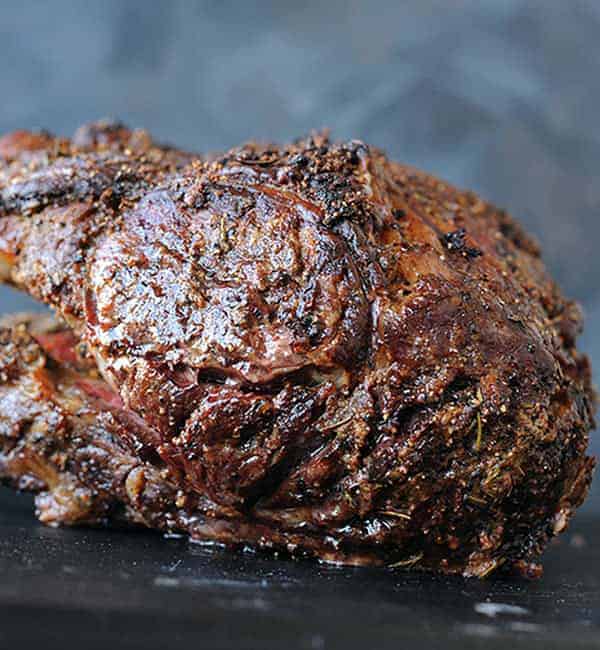This post may contain affiliate links which help support Girls Can Grill.

Save this BBQ Tip
Enter your email, and I’ll send this link directly to your inbox. Plus, you’ll get new BBQ recipes and tips weekly.
We’re all familiar with big juicy beef porterhouse steaks, but did you know you can get a pork porterhouse chop, as well.

Like it’s beef cousin, it contains two muscles split by a bone. One side of the bone is the lean, yet juicy pork tenderloin and the other is the familiar loin eye muscle found in classic loin chops. Combined, they make for an extra special dinner.

After adding a little rub, they grill up quickly in about 4 minutes per side. As always with pork chops, aim for a temperature of 145F degrees. If you go too far over that, you’ll dry out the meat.
You can enjoy these pork porterhouse chops straight up, but I like adding sweet, tangy sauces to my chops. This dish includes a recipe for Lingonberry-Dijon Sauce. If you have an Ikea near you, you’ve probably dipped a few Swedish meatballs in lingonberry jam.
Lingonberries are similar to cranberries. They’re tart and sweet and the perfect accompaniment to grilled meats.

Save this BBQ Tip
Enter your email, and I’ll send this link directly to your inbox. Plus, you’ll get new BBQ recipes and tips weekly.

Pork Porterhouse Chops with Lingonberry-Dijon Sauce
Ingredients
- 2 pork porterhouse chops
- 2 tsp olive oil
Pork Rub
- 1 tsp sea salt
- 1/2 tsp black pepper
- 1/2 tsp granulated garlic
- 1/4 tsp dry mustard
Lingonberry-Dijon Sauce
- 1/2 cup lingonberry jam
- 1/4 cup chicken broth
- 1 tbsp Dijon mustard
- 1 sprig fresh thyme
Finishing Touches
- 2 tbsp butter
- fresh thyme leaves
Instructions
- Rub the chops with olive oil. Combine the rub ingredients, and sprinkle on both sides of the chops. Let rest on a pan on the counter while you heat the grill to high.
- In a saucepot, combine the sauce ingredients. Cook over medium-low heat, until melted. Remove the thyme stem.
- Grill the pork porterhouse chops 4 minutes per side, or until the internal temperature reaches 145F degrees. During the last minute, top each chop with 1 tablespoon of butter.
- Remove to platter. Let rest for five minutes. Spoon on sauce. Garnish with fresh thyme.
Notes
Nutrition
Nutrition information is automatically calculated, so should only be used as an approximation.













